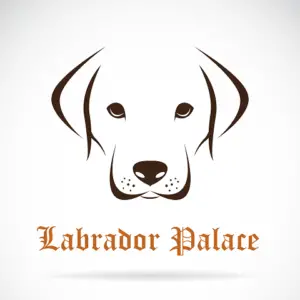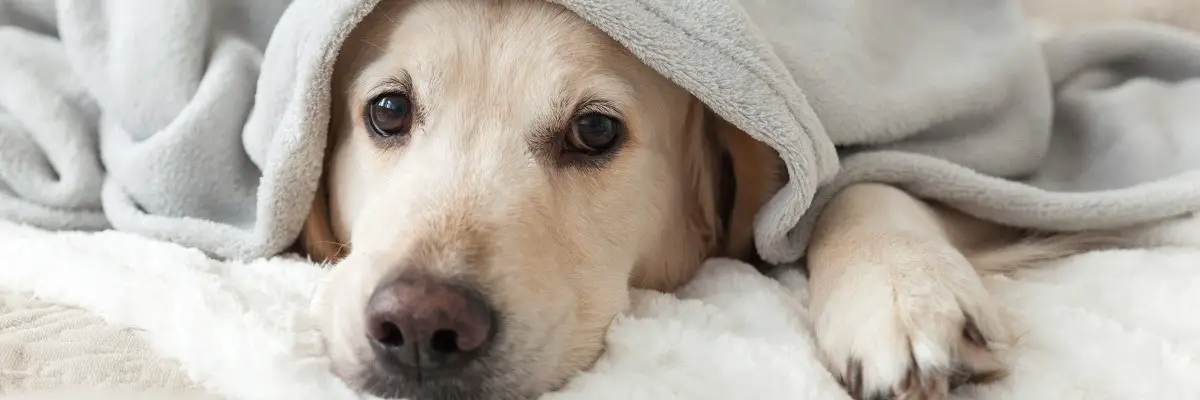One day, you may notice a lump or bump under or on the skin of your Labrador Retriever. Although lumps and bumps are more common in older Labrador Retrievers, young Labradors may also have them.
Lumpy or bumpy spots are often harmless (non-cancerous); however, some of them can be cancerous. Having a lab that is older and more mature makes it more likely that it will develop cancerous lumps.
An excellent thing about cancerous lumps is they can be more easily diagnosed and treated early.
Examples of Bumps and Lumps include:
| Hives | Fatty Tumours |
| Abscess | Warts |
| Sebaceous Cyst | Mast Cell Tumours |
Hives And Rashes on Skin On Labrador Skin
Labradors typically develop hives after being exposed to an allergen. The majority of hives aren’t life-threatening, so they may also be a sign of more serious adverse reactions or toxicity.
Learning how to identify signs of allergic reactions, such as hives, can help you get your Labrador Retriever the medical care they need in a timely manner.
Symptoms of Hives in Labrador Retrievers
Your Labrador Retriever will exhibit similar symptoms to those of humans suffering from hives:
| A bumpy or lumping-looking coat | Raised Wheals |
| Redness | Swelling |
As with you, dog hives are small, measuring about 1 to 20 centimetres in diameter. They may appear in a single location or appear all over your Labrador Retriever’s body.
It may also appear as a single larger swelling if many hives are present in the same area.
The hives will become quite itchy. Examine your Lab’s skin for signs of irritation, such as hives, or other irritants, such as lice, and contact your veterinarian if the problem worsens.
What Causes Hives on Your Labrador Retriever?
It is a normal immune response to have hives. Their occurrence is caused by allergies, which can be triggered by a wide range of factors. Here are a few that are often responsible for hives:
| Plant irritants | Insect Bite or sting |
| Adverse drug reaction | Environmental allergens |
| Exposure to chemicals | Sunlight |
Your Labrador’s surroundings are full of allergens and irritants. Several allergens, including food, spores, debris, fleas, and flea bites, can contribute to hives. Insect bites are also known to trigger severe allergic reactions, like hives.
Treatment for Hives On Your Larador
It usually takes a couple of hours for hives to resolve on their own. If your Lab has a severe or chronic allergic reaction, or if swelling causes extreme discomfort, then medications may be needed. For managing hives, your vet can prescribe a corticosteroid or an antihistamine.
Fatty tumors/Lipoma on Your Labrador Retriever
A Labrador Retriever can develop lipomas, which are mostly harmless fatty tumours. In other words, the lump won’t spread to other parts of their body like cancerous growth.
As your Labrador ages, he or she may develop lipomas. Labrador Retrievers’ moles can range in size and can appear anywhere on their bodies, but they are most often found on their chests, abdomens, legs, and under their armpits.
Among the many types of lumps that your Labrador could acquire as it ages, lipomas are by far the most common.
So What Actually Is A Lipoma?
Lipomas are harmless accumulations of fat cells. A lipoma is soft and typically oval or circular in shape. Generally, they can be found in the subcutaneous layer of tissue, which is the innermost layer of your Lab’s skin.
If you gently push the lipoma, it can travel under the skin. Usually, lipomas do not cause pain to your Labrador Retriever, but infiltrative lipomas may expand into muscles or soft tissues and cause discomfort.
Fatty Lump Lipoma treatment
A lipoma won’t give your Labrador Retriever any problems other than its appearance. Veterinarians recommend leaving them be unless they are causing the dog distress.
Lipomas, especially infiltrative lipomas that tend to develop in places like the armpits or legs, can be very painful or unpleasant. If lipomas impede your Lab’s motion or cause discomfort, surgical removal is generally recommended.
There has been no definitive study of what stops lipomas. All dog breeds are susceptible to them. Keeping your Labrador lean and feeding them fresh, unprocessed food is often recommended for their general well-being.
Bumps and Lumps On Your Labrador Retriever From Abscess
Often involving the skin, gums, between the toes, and within the body cavity, abscesses in your lab are pus-filled pockets.
There are several different types of abscesses in dogs, ranging from minor and insignificant to severe and life-threatening. The swelling usually appears in patches, which can either be solid to the touch or soft and squishy to the touch.
There are others, which develop deep inside the skin and do not surface on the outside. In addition to bursting, abscesses may discharge a foul-smelling pus-filled material.
What Causes Abscesses In Your Labrador Retriever
There are several possible causes for abscesses, but most commonly, they are caused by a bacterial infection. Abscesses are formed when these bacteria multiply unchecked. Breeds that are prone to developing abscesses include some. These include Chinese Shar-Pei, Labrador Retrievers, and English bulldogs, which all have short, rigid hair that can be pushed down into the hair follicles, resulting in an abscess.
Signs Of Abscesses On Your Labrador Retriever
There are a number of signs that may appear when your Labrador Retriever has an abscess.
A veterinarian can take a swab and blood sample to determine what type of bacterial infection it is and if it has spread to the bloodstream. The following are some symptoms of an abscess you can watch out for:
| Bumps, Lumps, inflammation, swelling, and redness | Excessive licking or chewing of the site |
| Appetite loss | Lethargy |
| Hair Loss at the site | Black or putrid-smelling skin |
| Bleeding or oozing around the wound | Heat coming from the site |
Without the proper veterinary equipment and testing, internal abscesses are hard to diagnose and can present with few, if any, external symptoms.
Treating Abscesses On Your Labrador Retriever
The majority of exterior abscesses can be treated outpatient by your veterinarian. It is typically necessary to cut open the abscess to drain it or to remove it surgically. This may require anesthesia. To treat and prevent further infection, antibiotics are administered.
As well as anti-inflammatory drugs, anti-inflammatory agents can be administered to minimize inflammation. A veterinary examination should be conducted following the removal of the abscess to ensure proper healing.
Your Labrador Retriever Has Warts
It is possible that the bumpy spots on your Labrador Retriever are warts, which are also known as canine papillomaviruses. These lumps appear almost instantly and spread quickly. Generally, they can be found in the mouth and on the lips. They can also appear on the eyelids, stomach, or between the toes.
How Did My Labrador Retriever Get Warts?
Warts on Labrador Retrievers are caused by papillomavirus infections. Warts from other dogs can infect your Lab, but not humans or other species. Several types of canine papillomaviruses have been found, and each causes a different type of disease.
If a dog is infected with one type of papillomavirus, it will be resistant to that type but not the others. Labrador Retrievers can get papillomavirus from other dogs that have the virus or break their skin.
The papillomavirus can survive the area for weeks, so a wart dog that is infected will often leave the virus in a certain area. The virus can then be passed to another dog from that area later on. It normally takes a few months or two for warts to grow once your Labrador Retriever has been infected with papillomavirus.
Treating Your Labrador Retrievers Warts
As your Lab gains immunity to the infection, warts usually disappear on their own after a few months. Veterinarian care is sometimes necessary for the following circumstances:
| It is not uncommon for dog warts to cause secondary symptoms such as lameness, difficulty eating, or eye irritation. |
| Warts can bleed or become infected with bacteria. |
| It is possible for warts that cannot heal on their own to develop into cancerous tumours. The treatment of warts that have been present for more than 3-5 months is usually recommended. |
| In case your Labrador Retriever is taking immunosuppressive drugs or has other severe health conditions, they may not be able to get rid of their warts on their own. |
When a significant percentage of warts cause issues for your Labrador Retriever, medication may be required. Unfortunately, the effectiveness of these procedures cannot be determined since most dog warts disappear on their own.
Bumps due to Sebaceous cysts
Sebaceous glands are small structures that naturally produce keratin, a waxy or fatty substance.
It is possible that you are unaware that your Labrador Retriever has sebaceous glands until they become infected and develop into cysts. Brushing your Lab regularly stimulates the glands to produce oils that moisturize their skin and make their coat nice and shiny.
Brushing regularly can keep the glands healthy and prevent cyst formation. When these glands’ pores or hair follicles become blocked, oil builds up, causing problems. When the gland remains blocked, a cyst is eventually formed.
Why Does My Labs Glands Clog?
It is possible for pore blockages to be caused by soil, bacteria, local trauma, or thick sebum that won’t pass through the pore opening.
Sebum is also the name of the material produced by the sebaceous glands. A cyst forms when the oily matter can no longer pass through an obstruction, causing it to form a pocket.
Signs of Sebaceous Cysts On Your Labrador Retriever
| Blockages of sweat glands often appear as transparent, black, or bluish nodules around the eyes or ears. |
| There are usually smooth, circular growths ranging between 5mm and 5cm in diameter. |
| As long as they are not large and obstruct mobility or interfere with your Lab’s behaviour, they are not problematic and do not have to be removed. |
Infection can occur when the cyst bursts and opens, which can cause complications. The growth of cysts that are very rapid can lead to complications.
Treating Your Labrador Retrievers Sebaceous Cysts
The treatment of a sebaceous cyst is not easy. Doing it at home, however, will not yield much success, since the root issue will always persist.
Until the entire region is removed, cysts will not disappear. A veterinarian can perform this surgery, which is prescribed when cysts recur, become susceptible to infection, or negatively affect your Labrador Retriever’s quality of life.
In particular, if it’s an alternative at all and the cyst doesn’t seem to bother your lab, then it would be better left alone.
Bumps and Lumps From Mast Cell Tumor
Mast cell tumours are common in dogs and account for approximately 20% of all skin tumors. It is common for them to recur after surgery as well as to spread (metastasize).
Cancerous tumours may appear anywhere on your Lab’s body and can have a variety of appearances. Labrador Retrievers should be examined by a veterinarian if they develop lumps or bumps.
Symptoms of Mast Cell Tumors In Your Labrador Retriever
Have your Labrador Retriever checked by your vet as soon as possible if they have these signs or symptoms:
| Lumps, Bumps and Mass Lesions | Enlarged Lymph Nodes |
| Gastrointestinal Symptoms | Weight loss, weight gain, a persistent cough |
Treatment for Mast Cell Tumors
It can be frightening to have your Labrador Retriever evaluated, but the good news is that there are treatment options for them. These include:
| Chemotherapy | Surgery |
| Palliative | Radiation Therapy |
| Stereotactic Radiation |


